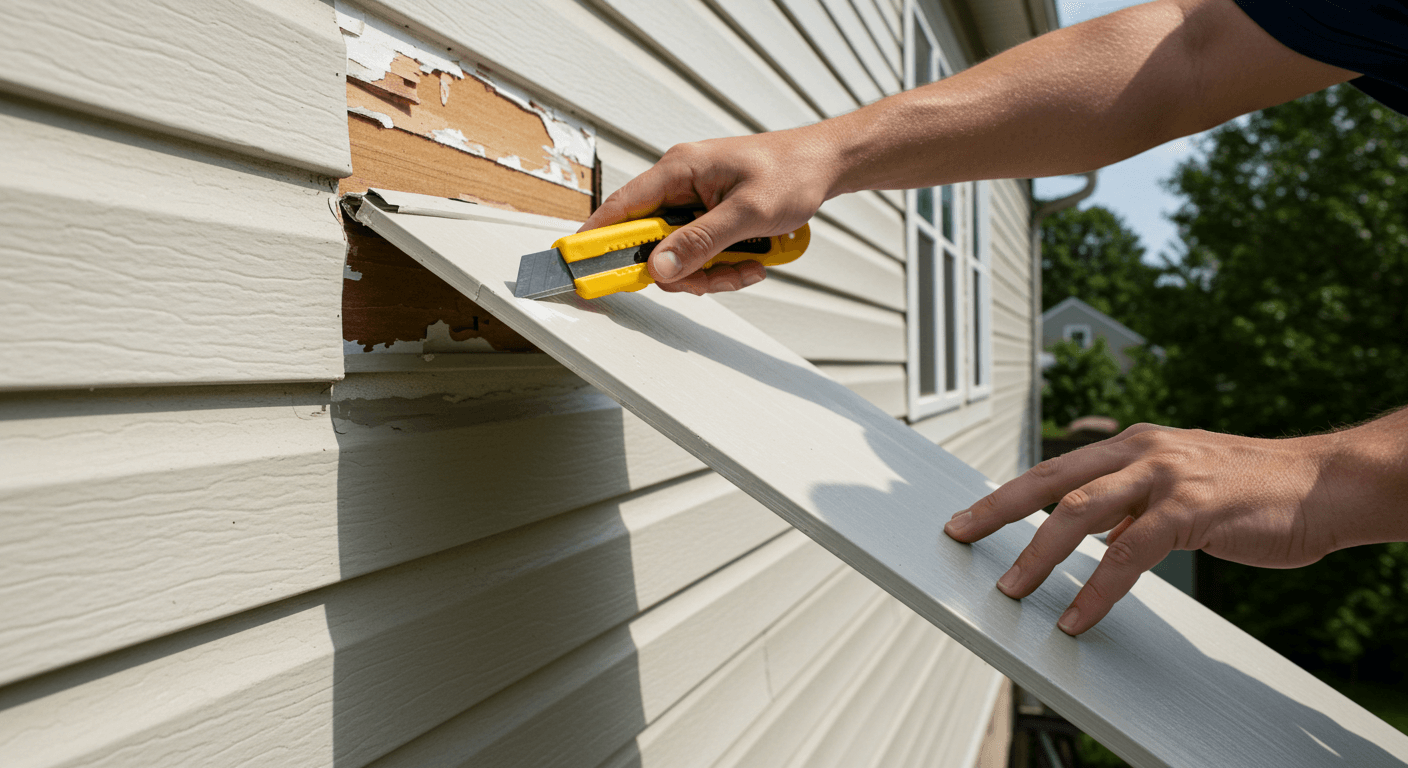
Vinyl siding is a popular choice for many homeowners due to its durability, low maintenance, and attractive appearance. However, like any material, vinyl siding is not immune to damage. Whether it’s from a storm, a falling tree branch, or general wear and tear, damaged siding can lead to further issues, including water infiltration, mold, and compromised insulation. If you’re looking for ways to repair vinyl siding damage, this guide will help you understand the steps involved, common issues, and when it’s time to call a professional.
Common Causes of Vinyl Siding Damage
Vinyl siding is designed to withstand the elements, but it can still sustain damage from various factors. Some of the most common causes of vinyl siding damage include:
- Storms and Hail: Strong winds, hail, and debris can crack or dent vinyl siding.
- Impact Damage: A stray baseball, falling tree branch, or even a lawnmower can cause direct impact damage.
- Sun Damage: Over time, exposure to UV rays can cause fading, cracking, or warping of the vinyl.
- Pest Damage: Small animals and insects can sometimes chew or scratch the siding, causing visible damage.
If you notice damage, it’s important to address it promptly to prevent further complications, such as water infiltration or mold growth.
Step-by-Step Guide to Repair Vinyl Siding Damage
- Assess the Damage Before starting any repairs, carefully examine the area to determine the extent of the damage. Is it a small crack, a hole, or a large section of missing siding? The type of damage will determine the materials and techniques you’ll need.
- Gather the Necessary Tools and Materials For small repairs, you’ll need:
- Replacement vinyl siding pieces (matching your current siding style and color)
- A utility knife
- A siding puller or a flat pry bar
- A hacksaw (for cutting the new siding)
- Caulk or siding adhesive (for sealing seams)
- If you’re repairing a larger section or multiple panels, you may need more extensive tools, including a power drill or saw.
- Remove the Damaged Panel To replace a damaged panel, start by removing the affected section. Use the siding puller or pry bar to gently lift the bottom edge of the panel. Slide the tool underneath the panel and release the nails or fasteners holding the panel in place. Be careful not to damage the surrounding panels during this process.
- Prepare the Replacement Panel Once the damaged panel is removed, measure the length of the new panel to ensure a proper fit. If the replacement piece is too long, use a hacksaw to trim it to size. If necessary, cut the new panel to match the existing shape and style.
- Install the New Panel Align the new panel with the existing siding, ensuring it fits securely in place. Slide the panel under the adjacent siding pieces and nail or fasten it back into position. Make sure it’s properly aligned with the row of siding and that it’s tightly secured.
- Seal the Seams Once the new panel is installed, use caulk or siding adhesive to seal any seams and prevent water from getting behind the siding. This is especially important if you’re replacing the siding in an area prone to moisture exposure, such as near windows or doors.
- Inspect the Entire Siding After completing the repair, take a step back and inspect the entire siding to ensure that the new panel blends seamlessly with the rest of your home’s exterior. If the color is slightly off, consider applying a siding-specific touch-up paint.
When to Call a Professional
While many vinyl siding repairs can be done by homeowners with the right tools and materials, certain situations may require the expertise of a professional. For example:
- If the damage is extensive or affects multiple panels
- If you’re unable to find a matching replacement panel
- If you suspect underlying issues, such as water damage or mold, that require further inspection
- If you lack the necessary tools or skills to perform the repair safely
In these cases, it’s best to contact a professional siding contractor who can ensure the job is done correctly and efficiently.
Why House Siding in Olney Matters
If you’re considering replacing or repairing your vinyl siding, make sure you choose the right contractor. For residents in Olney, investing in quality house siding in Olney ensures your home is protected from the elements while boosting its curb appeal. Professional siding contractors have the experience and materials needed to handle all types of siding repairs and installations, helping you maintain a beautiful and functional home exterior.
Conclusion
Repairing vinyl siding damage is often a straightforward task that homeowners can handle with the right tools and guidance. By following the steps outlined above, you can restore the appearance and function of your siding and protect your home from the elements. However, if you’re unsure about the repair process or if the damage is too severe, don’t hesitate to consult a professional. A well-maintained siding not only enhances your home’s aesthetics but also its overall durability and energy efficiency.







